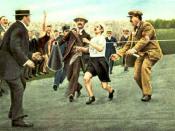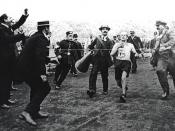INTRODUCTION
Some of the most severe stress an athlete can encounter is exercise in the heat. The fact that many sporting events are held in unfavourable environmental conditions makes it crucial that coaches/trainers appreciate the severity of this challenge and understand how to effectively acclimatise their athletes for competition in the heat. Performance is almost always worsened during hot weather, and sometimes the heat can pose a threat to the athlete's health. Some famous championship marathon races that where held in hot weather provide some examples of serious heat illness, including Dorando Pietri in the 1908 Olympic marathon in London, Jim Peters at the Empire Games marathon in Vancouver in 1954, and Gabrielle Andersen-Schiess at the 1984 Los Angeles Olympic marathon. Athletes that compete in shorter events in heat such as rugby, football and tennis also fall victim to the heat. Athletes who live, train and often compete in mild climates are placed at a large disadvantage when the event they are going to compete in is going to be a hot and humid environment, because of this, a training schedule should be devised to cope with the temperature changes and minimise the disadvantage.
The following text and case study will provide knowledge of heat and exercise and the importance of hydration, acclimatisation and prevention of the serious illnesses that it can impose on athletes.
REVIEW OF LITERATURE
The human body is highly sensitive to alterations in internal temperature, and is normally maintained at approximately 37oC (Wilmore and Costill, 1999). An individual can tolerate a variation of only about 4oC in the deep body temperature without impairment to physical and mental performance (Astrand and Rhodal, 1986).
If dehydration is allowed to occur, the improved ability to tolerate heat that results from the acclimatization process will be compromised (Sawka &...


